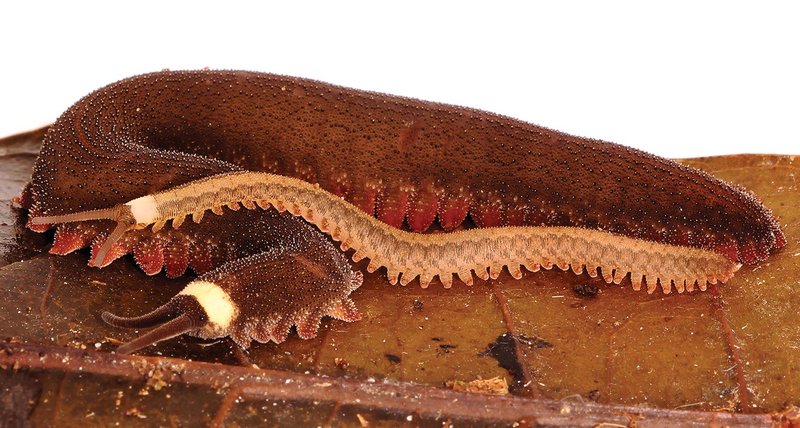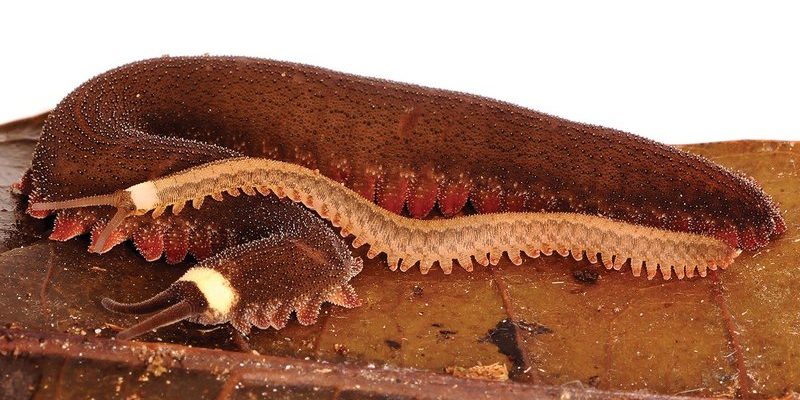
Imagine a creature that looks like a blend of a caterpillar and a slug. That’s a velvet worm—a soft-bodied, squishy little guy that thrives in the shadows of the forest floor. They’re not just ancient in their appearance; they have a rich fossil history that paints a picture of their resilience through various extinction events. Let’s dive deeper into the world of velvet worms and explore their incredible fossil records and the secrets they hold about survival in a constantly changing world.
What Are Velvet Worms?
Velvet worms, scientifically known as **Onychophora**, are unique creatures that enable us to connect with the distant past. They’re most commonly found in humid, tropical regions and often hide away during the day, emerging at night to feast on insects and small invertebrates. Their body is covered in a velvety texture, hence the name, and they have paired, stubby legs that give them a distinctive, caterpillar-like appearance.
What sets these worms apart is their fascinating way of hunting. They have a pair of slime glands that can shoot out a sticky goo, allowing them to trap prey with remarkable accuracy. You might think of them as nature’s mini predators, using stealth and a surprising amount of strategy to survive. Despite their simple appearance, these creatures are incredibly well-adapted to their environment.
Their evolutionary history is a treasure trove of information. The fossils we’ve found help us understand not just the velvet worm itself, but also the ancient ecosystems in which they lived.
A Glimpse into Fossil Records
Fossil records are like time capsules, offering snapshots of life millions of years ago. Velvet worm fossils have been discovered in various forms, including impressions in sediment and even complete specimens preserved in amber. These fossils showcase the remarkable features of velvet worms over the ages and provide insight into their evolutionary journey.
One of the oldest known velvet worm fossils dates back to the Cambrian period, about 500 million years ago. This find indicates that they shared the planet with some of the first complex life forms. It’s fascinating to think about what the world looked like back then and how these creatures adapted to survive through numerous environmental shifts.
Here’s the thing: the discovery of these fossils also tells us about the environments that existed during their time. For example, finding velvet worm fossils in marine sediments suggests that these creatures may have once lived in coastal or even underwater environments.
Why Velvet Worms Are Important to Ecosystems
Velvet worms play a crucial role in their ecosystems. As predators, they help control the populations of smaller invertebrates, maintaining a balance within their habitats. But their role goes beyond just being hunters. They are also prey for larger animals, making them a vital component of the food web.
Their specific habitat preferences—moist, humid environments—also make them indicators of ecosystem health. If velvet worms thrive in a particular area, it’s a sign that the ecosystem supports diverse life. Understanding their fossils helps paleontologists determine past climate conditions and ecosystem changes, providing clues about how life on Earth has evolved in response to environmental shifts.
In essence, studying these ancient creatures gives us a glimpse into the planet’s history and the interconnectedness of life.
Survival Through Extinction Events
The Earth has seen several mass extinction events, each reshaping the landscape of life. Velvet worms have managed to survive these dramatic changes, which makes their story all the more intriguing. Their hardy nature and adaptability have allowed them to withstand drastic shifts in climate and biodiversity.
For instance, during the Permian-Triassic extinction around 252 million years ago, a significant proportion of the planet’s species went extinct. Yet, velvet worms continued to thrive, likely because of their specialized adaptations. They have a low metabolic rate and can survive on minimal food, allowing them to outlast harsher conditions when resources were scarce.
Understanding how they’ve navigated such tumultuous times helps scientists predict how current species might cope with today’s environmental changes. If velvet worms can adapt and survive for hundreds of millions of years, what lessons can we learn about resilience?
The Fascination of Modern Research
Today, scientists are still delving into the mysteries of velvet worms. Their unique physiology and ancient lineage make them a point of interest in evolutionary biology. For researchers, studying their **fossils** provides insights not only into their survival strategies but also into the broader story of life on Earth.
Modern technology, including advanced imaging techniques, allows scientists to examine these fossils in detail without damaging them. This research can reveal how these creatures have changed over time and how they’ve adapted to different environments.
You might find it surprising that velvet worms are sharing the spotlight in genetic studies too! Their DNA can give us clues about the evolutionary pathways of other organisms, broadening our understanding of how life developed and diversified.
Why Should We Care About Velvet Worms?
You may be wondering why these little creatures deserve our attention. Beyond their cute appearance and fascinating biology, velvet worms symbolize the importance of biodiversity and the need to protect our ecosystems. As they continue to survive in their specialized habitats, they remind us of the delicate balance of nature.
Conserving their environments is essential. When we protect velvet worms and their habitats, we also safeguard countless other species that rely on the same ecosystems. Furthermore, they serve as a reminder of the resilience of life. If these little warriors can survive through centuries of change, so can we, in the face of our modern challenges.
These creatures encourage us to appreciate the intricate web of life we are all a part of, reminding us that every species, no matter how small, has a role to play.
Velvet worms are more than just peculiar little creatures; they are a testament to the resilience of life on Earth. Their ancient history, beautifully captured in the fossil records, tells a story of survival through adversity. As we look back at their incredible journey, we’re invited to reflect on our connection to the natural world and the importance of preserving it for future generations.
Understanding velvet worms—and their place in the grand tapestry of life—helps us appreciate the fragile nature of our ecosystems. The next time you come across a fuzzy little worm, remember that it might just be a descendant of a miniature survivor that has weathered the storms of time. And isn’t that a story worth telling?

